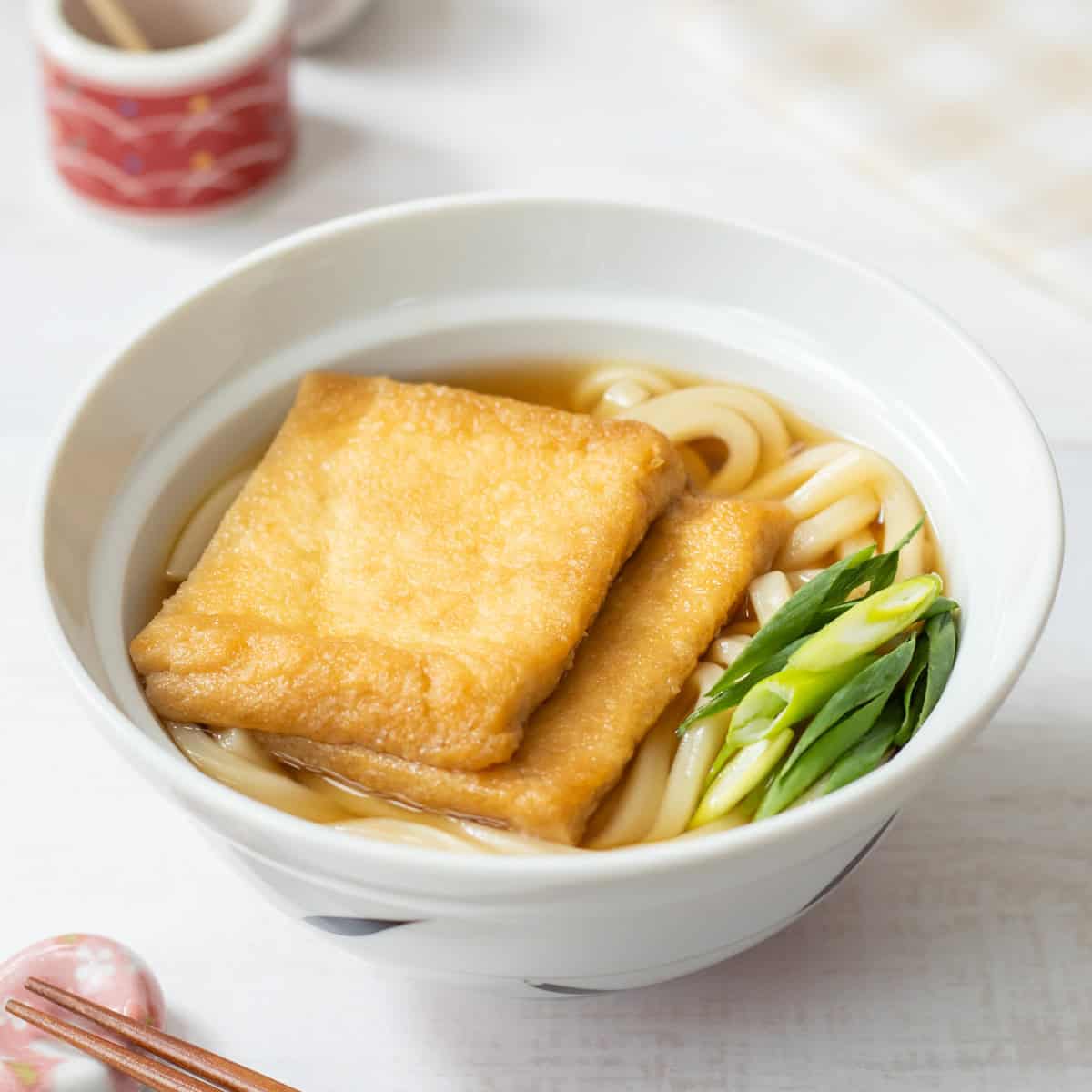
Kitsune Udon (Authentic Osaka-Style)
With its perfect harmony of dashi broth and sweet, savory fried tofu pouches, Kitsune Udon is one of the most beloved udon noodle soups in Osaka, Japan. The fried tofu adds just the right touch, and its oil content contributes to the dish’s rich, savory depth.
Print Recipe
Pin Recipe
Servings: 1
Ingredients
- 1 serving udon noodles (fresh, dried, pre-cooked, or frozen)
- 2.1 oz aburaage (fried tofu pouches) or inari age (seasoned fried tofu pouches) (If using store-bought inari age, the ingredients listed below under "For seasoning aburaage" are not necessary.)
- 1 green onion / scallion
- ½ Tbsp mirin
- 1 ½ Tbsp light soy sauce (You can substitute it with regular soy sauce; the main difference is the color.)
Awase dashi (udon broth) — if using aburaage:
- 2 ¼ cups water
- 0.2 oz kombu (dried kelp)
- 1 cup bonito flakes (katsuobushi)
Awase dashi (udon broth) — if using store-bought inari age:
- 1 ½ cups water
- 0.15 oz kombu (dried kelp)
- ⅗ cup bonito flakes (katsuobushi)
For seasoning aburaage:
- ½ cup awase dashi (prepared in step 4)
- 1 Tbsp mirin
- 1 Tbsp sugar
- 1 Tbsp soy sauce
Instructions
- Put water and kombu in a pot and let it sit for at least 30 minutes until the kombu softens.
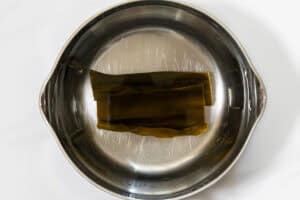
- Heat the pot over very low heat for about 10 minutes or longer. When small bubbles start to appear on the surface, remove the kombu.
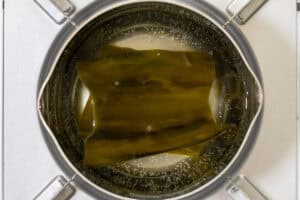
- Increase the heat and bring the water to a boil. Once boiling, reduce the heat to low, add bonito flakes, and let it simmer for 6 minutes.
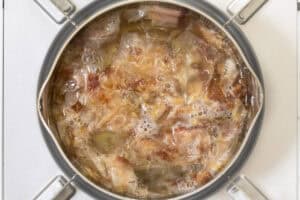
- Turn off the heat and strain the mixture through a sieve lined with paper towels or a cloth (such as cheesecloth). Alternatively, if you don't mind a few fine bonito flakes remaining, you can simply use a fine-mesh strainer. Awase dashi (udon broth) is now ready.
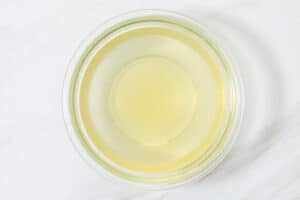
- Place the aburaage in a heatproof bowl and pour hot water (not listed in the ingredients) over it to remove any excess oil. Remove it from the bowl, and once it has cooled enough to handle, gently squeeze out any remaining moisture. If your aburaage is large, you can optionally cut it into halves or quarters.
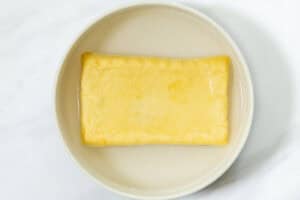
- In a pot, combine the ingredients for seasoning aburaage (awase dashi, mirin, sugar, and soy sauce), and bring it to a boil. Once boiling, add the aburaage and simmer over low heat, flipping occasionally, for about 15 minutes.
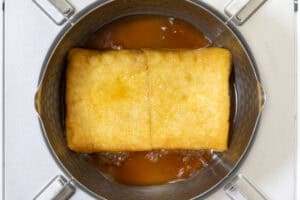
- Thinly slice the green onion diagonally or into rings.
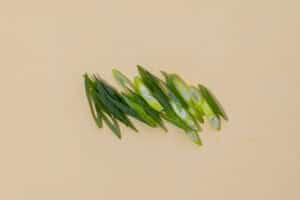
- If using fresh, dried, or pre-cooked udon noodles: Boil the udon noodles according to the package instructions. Once cooked, drain them in a colander.If using frozen udon noodles: Lightly sprinkle water over the udon noodles. Then, place them on a microwave-safe plate, cover with plastic wrap or a microwave-safe lid, and microwave on medium power (500-600W) for 3.5 to 4 minutes, or until heated through. (Since this method can cause uneven heating, it is best to microwave one serving at a time. You can also boil them like the other types of udon noodles.)
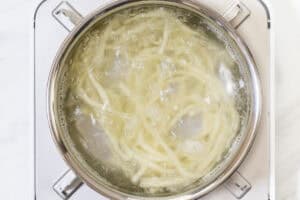
- Return the dashi to the pot, add mirin and light soy sauce, and bring it to a boil. Once it starts boiling, remove it from the heat.
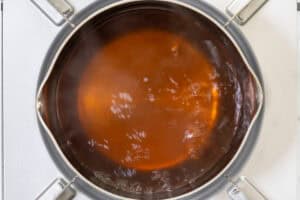
- Place the udon noodles in a bowl and pour the liquid mixture (udon soup) over them. Loosen the noodles with chopsticks, then top with the seasoned aburaage (inari age) and green onions.
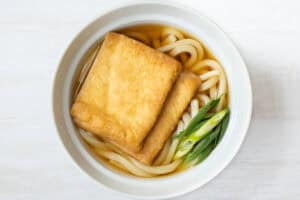
Notes
- If you already have udon broth (awase dashi or another type of dashi), start from step 5. In that case, use 1 ¾ cups (420 ml) if using aburaage, or 1 ¼ cups (300 ml) if using store-bought inari age per serving. Additionally, if you are using store-bought inari age, you can skip steps 5 and 6.
- This dish is not suitable for storage because cooked udon noodles tend to lose their texture over time, making them less enjoyable. However, the udon soup alone can be stored for up to 3 days.
Nutrition
Calories: 448.07kcal Carbohydrates: 49.77g Protein: 25.9g Fat: 19.67g Saturated Fat: 2.11g Polyunsaturated Fat: 7.35g Monounsaturated Fat: 6.73g Sodium: 3315.45mg Potassium: 283.75mg Fiber: 3.64g Sugar: 22.36g Vitamin A: 36.49IU Vitamin C: 0.73mg Calcium: 242.34mg Iron: 3.21mg
Enjoyed this recipe?I’d really appreciate it if you shared it with your friends.